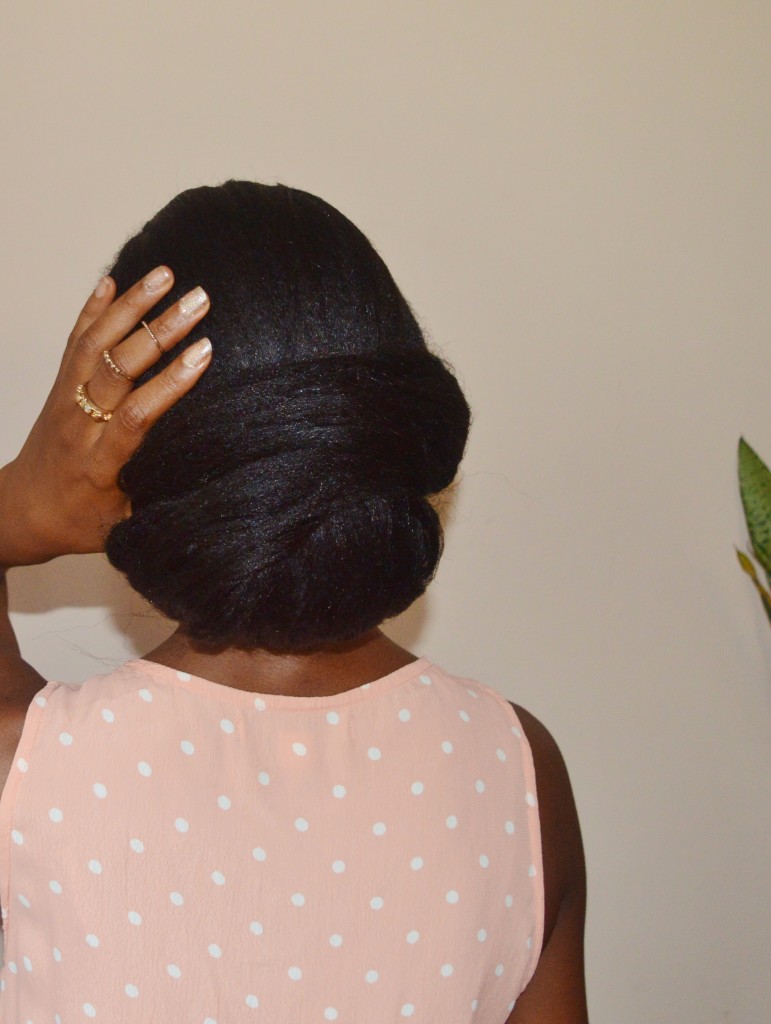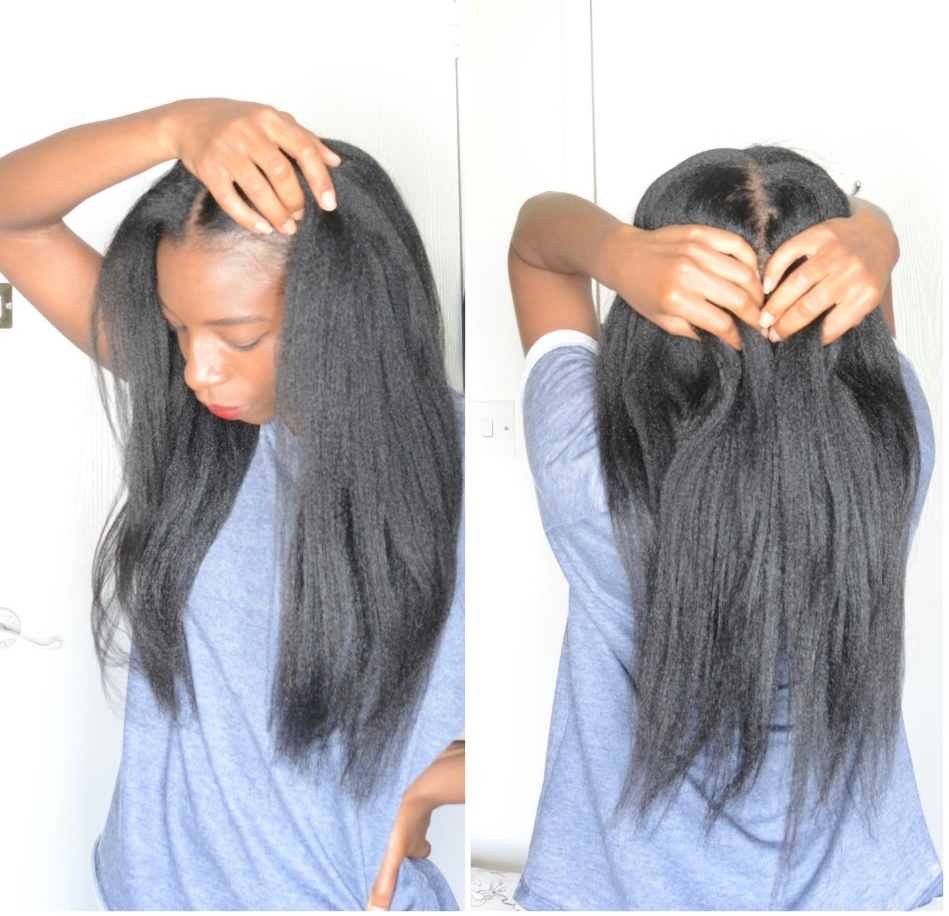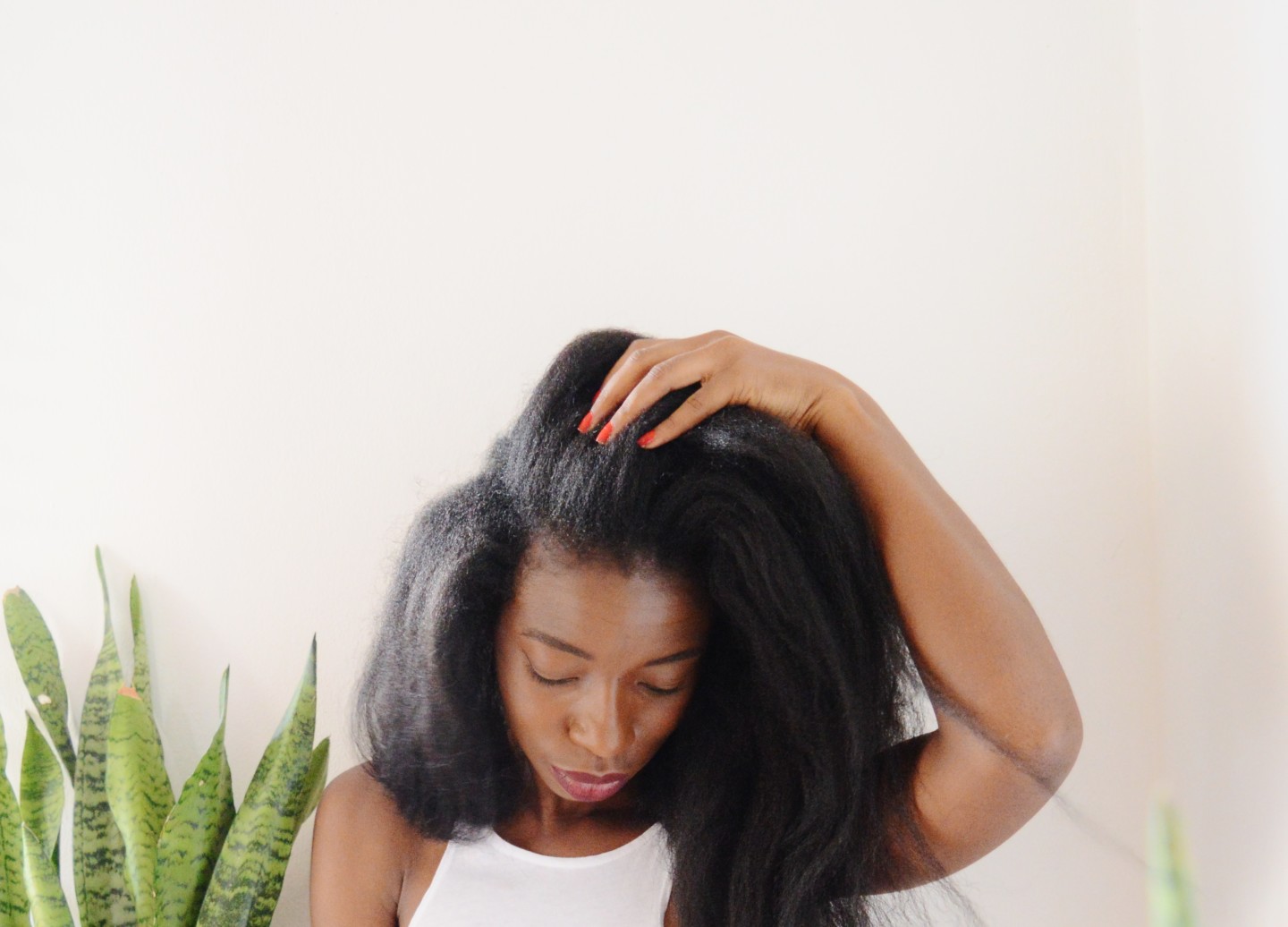
In part one, which you can read by clicking here, I set out how relaxing/texlaxing causes damage to the hair by compromising its structural stability in the cortex layer of hair and also causes surface degradation to the cuticle layer of hair.
In this post I’ll share some percentages that shows the extent of the damage that occurs and more importantly, some tips to help ladies with relaxed hair keep their hair in good condition, retain as much of the stability their hair has left and improve its ability to fight breakage.
The Mathematics of Relaxed Hair
My understanding of hair is rooted in science. Mathematics is the science of quality, structure and change. Relaxing definitely changes the structure and quality of hair fibres so I believe using some mathematics will give you even more understanding of why relaxed, texlaxed and even texture released or color treated hair really does need more care.
Cystine and disulphide bonds are not only source of stability and strength of hair BUT they are one of the MAIN source of hairs strength. In a person with no health issue or hair loss condition that is affecting their hair and scalp, when hair grows out of their scalp, we can presume that it has 100% of its Cystine strength.
I came across a study some months ago which found that in natural hair that has not undergone chemical straightening but that had sustained other types of damage, there is approximately 21% reduction in Cystine.
This means natural hair that has sustained a fair amount of wear and tear and some other moderate damage should still have about 79% of its Cystine strength.
Great hair care might result in less Cystine loss than this and lack of care/too much styling/ incorrect/ care might lead to much higher cysteine loss than this.
The same study showed that in relaxed hair, there is approximately 33% reduction in Cystine as a result of the relaxer process. This means hair has only 67% of its Cystine strength left. I presume texlaxed hair retains more of it Cystine strength but the study did not cover this.
If you then think about additional wear and tear and damage further reducing Cystine in relaxed hair by another 20%, that leaves only 47% of Cystine strength left.
Frankly with relaxed hair can’t afford to sustain that much wear and tear as it will take the hair strands from moderately compromised to severely compromised. There isn’t much room for high levels of wear and tear and damage because a notable amount of its strength has already been reduced. You want to prevent FURTHER Cystine loss as much as possible. Relaxed hair cant afford to have the additional 21% Cytine reduction that natural hair can withstand.
Great hair care might result in less Cystine loss from wear and tear than this and relaxer abuse, over processing, lack of care/too much styling/ incorrect/ care might lead to much higher cysteine loss than this.
It goes without saying that there will always be some women whose hair is relaxed and is still exceptionally strong and may experience less Cystine loss than the average however they are the exception not the rule.

Four Things You Can Do To Help Relaxed Hair Thrive
So now that the point has been really driven home, what are some not so obvious things women with relaxed and texlaxed hair do to hold on what is left of the hairs structure and tensile strength.
1) Reduce heat styling
The disulphide bonds which are found within Cystine is what relaxers weaken to make the hair structure change and form a new straightened shape. Other things besides relaxers can break or weaken the disulphide bonds. An example is high levels of heat.
Use of heat for styling especially at very high temperatures will further break down the disulphide bonds resulting in further weakening of your hair.
If your hair is relaxed, texlaxed or processed in other ways, reducing the frequency or temperature at which you heat style is advisable.
2) Avoid Prolonged exposure to Sunlight.
Ever wondered why hair gets much lighter when it has been in the sun for a long time?
It is because prolonged exposure to UV from the sun causes some of the amino acids in the hair to become oxidized. This causes the loss of pigment and the hair becoming lighter, weaker and prone to break.
UV rays are environmental stressors and another thing that they do is break disulphide bonds when there is prolonged exposure. If you know you will be under the sun for a prolonged period and for several days, use of a hat or scarf can help protect your hair from too much exposure.
3) Be Consistent with Correct Hair Care (emphasis on correct)
Hair care is how we preserve our hair stands strength and integrity.
For relaxed hair doing so becomes crucial because lack of consistency will take your hair from healthy relaxed hair to unhealthy relaxed hair (ie one that has severe amount of damage) very quickly.
Good hair care products are effective but their impact is temporary not permanent. This is why consistent care is needed. You can’t use a conditioning product once and expect the effect to last forever.
Lack of hair care, very inconsistent or even incorrect hair care can lead to further degradation of the hair strands.
I emphasized correct acre because I have always taken care of my hair even before my hair journey BUT I was doing it wrong and my hair suffered as a result. It is important that you complete all stages of your hair care and styling correctly.
4) Quality and Efficacy of Hair Care Products.
What we do to our hair and the products we apply to it have a significant impact on the state or condition of our hair.
Hair, after leaving the scalp is a dead fibre but is still very responsive to what we apply to it. For example, relaxers can change the structure of hair and dyes can change the colour of hair.
Hair care products, good ones that is, should be formulated to help us preserve the health/integrity of our hair strands so that they remain in good condition for as long as possible.
Focusing on relaxed hair, it is important that you use products which based on their ingredients and formulation are able to mitigate the specific of damage caused by relaxers.
As set out in Part 1, the two main types of damage that occurs when hair is relaxed/texlaxed are (A) Surface degradation and hydrophobicity, (B) breakage, weakening and reduction of Cystine in the inner layer of hair.
- Surface degradation and hydrophobicity (of the cuticle/outer layer)
You should seek out hair products that are ceramide rich. Ceramides occur naturally in our hairs cuticle layer.
Ceramide ingredients are beneficial to all hair types including natural hair but they are even more needed by hair that has undergone chemical straightening. Ceramides in hair products compensates for the fatty acids that relaxers strip from the cuticle layer and works by helping the cuticles stay more compact so that they lay flatter.
Products that are ceramide rich in a good formulation will result in reduced surface friction making hair feel smoother, less tangle prone with more shine or sheen.
Hello strands that glide past each other!!!!! Hello less breakage!!!! Hello hair that looks and feels good!!! Hello more manageable hair!!!!!
Both of the oils within the Infusions by Hairducation hair product range have a very high content of naturally occurring ceramides.In addition to the above, ingredients that have a similar molecular structure to that of hair that makes them capable of restoring some the characteristics of outer layer of the hair strands are also very desirable. Such ingredients help to preserve the integrity of hair by making the hair regain a more hydrophobic nature (albeit temporarily). Remember as explained in part 1 that healthy hair is hydrophobic.
The Hair + Scalp Moisturiser and Smoothening Leave-in Conditioner in the Infusions by Hairducation range of hair products contains actives that makes the outer layer of hair more hydrophobic.

- Breakage, Weakening and reduction of Cystine in the inner layer of Hair.
Ingredients and a formulation that are capable of penetrating the inner layer of and working at a molecular level and also bind with hair.
If you know a lot about hair and products, you might think I am referring to proteins but I am not. Proteins work on the outside layer of hair and bind with the cuticle layer of hair to fill up gaps and cracks in hair.
This support IS needed by relaxed hair but more than that, ingredients that are molecularly capable penetrating into the inner layer of hair to impart their benefits on the inside hair AND also works on the outside of hair are better.The Hair + Scalp Moisturiser and Smoothening Leave-in Conditioner contains actives which have been proven to work on a molecular level to;
– replenishes and strengthens both the inner and outer layers of hair (strengthen not harden)
– draws moisture into the inner layer of hair and reduces moisture loss
– improves hair surface hydrophobicity of hair
– compatible or work with a wide range of hair types.Using products that have high quality ingredients and a great formulation will have a very significant impact in compensation for the damage done by relaxers.
Please note that completing all your hair care in a gentle methodical way is also important as well as responsible hair styling.
From all that has be shared in Part 1 and 2 of this series, I hope you can see why processed hair can easily and quickly go from low to moderate damage to becoming severely damaged if consistent hair care isn’t practiced and caution with styling isn’t exercised.
You can’t take too many liberties with processed hair.
I hope you have also found the tips helpful
X
Lade
Learn | Change | Grow
